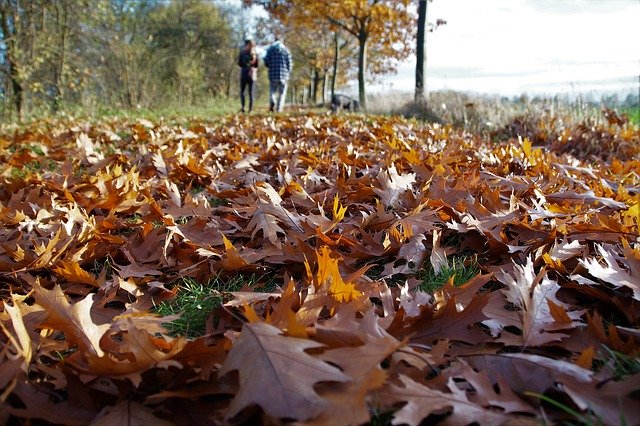
If you have a lot of deciduous trees in your garden, then you'll be starting to see a lot of brown and orange leaves appearing on the ground. Of course, if you're keen to keep your lawn looking green and healthy, you're probably wondering how to deal with this sudden mass of fallen leaves. Well, you've come to the right place! Our lawn care experts are here to give you all the tips you need to deal with fallen leaves.
Should I leave fallen leaves on my lawn?
Some people worry that leaving the fallen leaves on their lawn will suffocate the grass underneath. But it's very unlikely that your grass will die unless you have a huge amount of leaves blocking all sunlight. In fact, leaving the leaves on the lawn can reduce the growth of weeds and might even provide additional nutrients for your lawn. On the other hand, a thick layer of leaves over your grass may increase the chances of pests and lawn diseases like mould.
So, it really comes down to personal preference. If you don't want to run the risk of lawn diseases, then rake the leaves off your lawn. If you're happy to let the leaves decompose and (potentially) reduce the growth of weeds, then leave them as they are. There's no right or wrong way to deal with fallen leaves.
Are dead leaves good for grass?
As mentioned before, decomposing leaves can be a great source of nutrients for your lawn in autumn. The leaves are packed with minerals that the trees take up during the summer months. As the leaves decompose they release these nutrients back into the soil, giving your lawn a boost before the challenging months ahead.
That being said, these added nutrients are likely to encourage pests, trap moisture and encourage mould growth. Ideally, you'd leave a small number of leaves on your lawn to add some nutrients to the soil without smothering your lawn completely.
Do fallen leaves kill grass?
While we've mentioned how fallen leaves can provide your lawn with nutrients, in large quantities, fallen leaves can kill grass. Think about it, grass needs sunlight, water and air to grow. If there's a huge pile of fallen leaves on the surface of your lawn, then it's likely that your grass will be deprived of all three! Remember, a small amount of fallen leaves is probably good for your grass, but don't let piles and piles of leaves build up. Too many fallen leaves will kill your grass.
How can I get rid of fallen leaves on my lawn?
If you decide that you want to get rid of the leaves that have fallen on your lawn, then there are a few steps you should take. Start by gathering the leaves into a pile using a rake or leaf blower, then use a wheelbarrow to move the leaves off the lawn. If you decide to leave a small number of leaves on your lawn for their nutrient value, run over them with your lawnmower to mulch them. This will help them decompose faster and will spread them throughout the lawn evenly.
Our Autumn Lawn Care Service
Our autumn lawn care service includes a range of treatments that will keep your lawn healthy. We'll start by checking for lawn diseases, then we'll treat any developing moss before we apply a liquid herbicide to developing weeds. Finally, we'll give your lawn a dose of mineral-rich fertiliser to help encourage healthy grass and root development.
Autumn Lawn Care Service >
If you have any questions about our autumn lawn care service, don't hesitate to give us a call on 0800 111 4958. We can tailor our lawn treatments to suit your lawn's needs exactly!